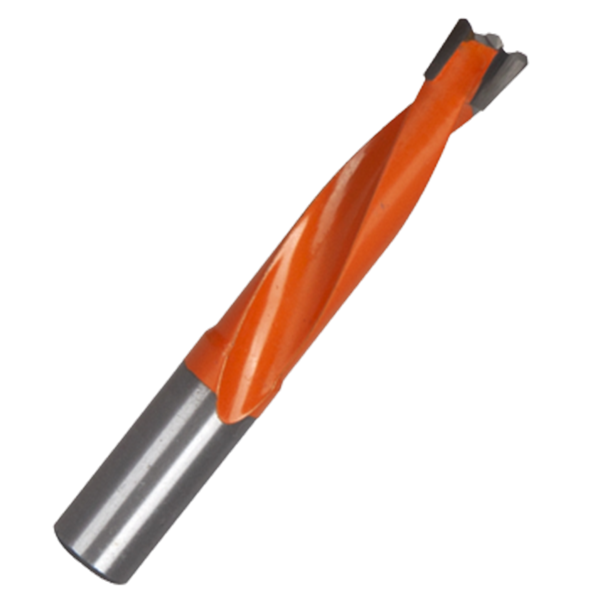What are the 3 most common types of mitre saws?
The mitre saw’s versatility makes it an indispensable addition to any workshop. They can make precise angle cuts, making them ideal for a variety of woodworking projects. Depending on the type of mitre saw you purchase, you may be able to make up to four different kinds of cuts: mitre cuts, crosscuts, bevel cuts and compound cuts. Often used for structural framing, the mitre saw can also be used for much smaller projects such as creating picture frames and planter boxes. This level of accuracy, combined with built-in safety features, makes miter saws both efficient and safer than many other power cutting tools. While they excel at making crosscuts and angled cuts, it’s important to understand their limitations and when to use other tools for specific tasks.
What is a Miter Saw?
A miter saw is a power tool that uses a circular blade to make crosscuts and bevel cuts at a variety of angles. The blade is mounted on a swing arm that swivels left or right, allowing for precise angle adjustment. Miter saws are commonly used to cut wood, plastic, and even some metals, making them a versatile tool for any workshop.They have many applications including making cuts for moulding, door frames, window casings and more.
Importance of Miter Saw in Woodworking
Miter saws are particularly valued for their ability to make clean, accurate cuts. Whether you’re building a home, constructing furniture, or creating decorative trim, a miter saw can significantly improve the quality of your work. The precision these tools offer is unmatched, making them a must-have for both professional and home workshops.
1. Basic Miter Saw
Overview
A standard miter saw, also known as a basic miter saw, is the simplest and most affordable option type of miter saw. It features a circular blade mounted on a swivel arm, allowing the user to make crosscuts and bevel cuts at a variety of angles,but doesn’t tilt for bevel cuts. A standard miter saw is typically used for simple cuts and is ideal for beginners.
Features
-
Blade Size: Standard miter saws typically come with a 10-inch or 12-inch blade, which can cut most types of wood. -
Angle Adjustment: Most models allow up to 45 degrees of angle adjustment on both sides, making it easy to bevel corners and joints. -
Cutting Capacity: Cutting capacity is often limited compared to compound and sliding models, making them less suitable for larger projects.
Pros
-
EASY: Standard miter saws are easy to use, making them a great choice for beginners. -
Affordable: These saws are usually cheaper than compound saws and sliding saws, so they are affordable for hobbyists too. -
Portability: Standard miter saws are generally lighter and easier to transport, which is beneficial for jobsite work.
Cons
-
Can’t cut bevels -
Width and depth of cut are limited to blade reach
Ideal Application
Standard miter saws are ideal for small to medium-sized projects, such as:
-
CROWN MOLDING: Create precise angles for crown molding installations. -
Photo Frame: Cut the corners of the photo frame at the right angle. -
Basic trim work: Make simple cuts to skirting boards and window frames.
2. Compound Miter Saw
Overview
The compound miter saw is an advanced version of the standard miter saw. Compound mitre saws have their blade mounted to the arm for a downward cutting motion.It can swing left and right to produce crosscuts and mitre cuts, and tilt for bevel and compound cuts. Dual-bevel models allow bevel and compound cuts in both directions without flipping your workpiece.
Features
-
Dual Bevel Capability: Many compound miter saws can be tilted both left and right, allowing for more flexible cutting options. -
Greater Cutting Capacity: Compound miter saws typically have a greater cutting capacity than standard models, making them suitable for thicker materials. -
Laser Guide: Some models are equipped with a laser guide to improve cutting accuracy.
Pros
-
VERSATILE: The ability to make both miter and bevel cuts makes this saw ideal for a wider range of projects. -
Precision: Compound miter saws generally provide more precise cuts, especially for complex angles. -
Enhanced Features: Many models come with additional features such as built-in lights and dust collection systems.
Cons
-
Width and depth of cut are still limited to blade reach -
Single-bevel models require flipping the workpiece for some cuts
Ideal Application
Compound miter saws are ideal for projects that require more complex cuts, such as:
-
CROWN MOLDING INSTALLATION: The dual bevel feature makes cutting easier when working with crown molding. -
Furniture Making: Great for making angle cuts on furniture. -
Intricate Trimming Jobs: Ideal for detailed trimming jobs that require precision.
3. Sliding Compound Miter Saw
Overview
The sliding compound miter saw is the most advanced type of miter saw available. It all the versatility of compound miter saws and a sliding feature, similar to a radial arm saw, allowing the saw blade to move forward and backward. This feature significantly increases the cutting capacity, making it suitable for larger materials,significantly increasing the cutting capacity for wider boards.
Features
-
Sliding Arm: The sliding mechanism allows for wider cuts to accommodate larger sheets and materials. -
Dual Bevel and Miter Function: Like the compound miter saw, it can make both bevel and miter cuts. -
Increased Cutting Capacity: Slide feature allows cutting up to 12 inches or more, depending on model.
Pros
-
MAXIMUM VERSATILITY: Sliding compound miter saws are the most versatile choice, able to handle a wide variety of cutting tasks. -
Efficiency: Cut larger materials without repositioning, saving time and energy. -
Precision: These saws often have advanced features, such as a digital display for angle settings.
Cons
-
More expensive than non-sliding models -
Takes up more space due to the sliding mechanism
Ideal Application
Sliding compound miter saws are ideal for larger projects, including:
-
FRAME: Great for cutting large pieces of wood for frame construction. -
Deck Construction: Great for making precise cuts in decking materials. -
Cabinet Making: Great for making intricate cuts in cabinets.
Choose the right miter saw for your needs
When choosing a miter saw, consider the following factors:
-
Project Requirements: Evaluate the type of projects you will be doing. If you primarily need to make simple cuts, a standard miter saw will probably suffice. For more complex projects, consider a compound or sliding compound miter saw. -
Budget: Determine your budget, as prices can vary greatly between models. Standard miter saws are generally more affordable, while sliding compound miter saws tend to be pricier. -
Space and Portability: Consider the available space in your workshop and whether you need a portable option for field work.
Miter Saw Maintenance Tips
Your miter saw will need a little care from time to time to stay functioning properly. Here’s what we recommend.
-
Cleaning and Lubrication: Regularly clean your saw to remove sawdust and debris. Pay special attention to the pivot points and sliding mechanisms, lubricating them as recommended by the manufacturer. -
Blade Replacement: A sharp blade is essential for clean, accurate cuts. Replace your blade when it becomes dull or damaged. When choosing a replacement blade, consider the type of material you’ll be cutting most often. -
Calibration: Check and calibrate your saw regularly to ensure accurate cuts. -
Safety Checks: Regularly check safety features such as blade guards and switches to ensure they are functioning properly.
Our Conclusion
Miter saws are invaluable tools for anyone who works in woodworking and DIY enthusiasts. Its ability to make precise, angled cuts quickly and safely makes it great for many woodworking projects. Understanding the differences between standard miter saws, compound miter saws, and sliding compound miter saws will help you make an informed decision when choosing the right tool for your needs. Whether you’re a beginner or a seasoned pro, investing in the right miter saw can significantly improve the quality of your work and simplify your woodworking projects.
By considering your project requirements, budget, and space, you can choose the perfect miter saw to advance your woodworking skills. Remember to properly maintain your saw to ensure it remains a reliable tool in your workshop for years to come.
Looking for the best miter saw for your next home improvement project?
Post time: Nov-20-2024








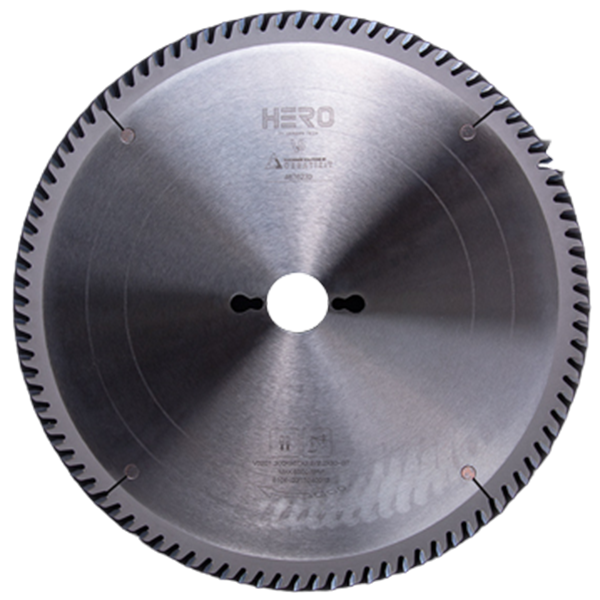 TCT Saw Blade
TCT Saw Blade HERO Sizing Saw Blade
HERO Sizing Saw Blade HERO Panel Sizing Saw
HERO Panel Sizing Saw HERO Scoring Saw Blade
HERO Scoring Saw Blade HERO Solid Wood Saw Blade
HERO Solid Wood Saw Blade HERO Aluminum Saw
HERO Aluminum Saw Grooving Saw
Grooving Saw Steel Profile Saw
Steel Profile Saw Edge Bander Saw
Edge Bander Saw Acrylic Saw
Acrylic Saw PCD Saw Blade
PCD Saw Blade PCD Sizing Saw Blade
PCD Sizing Saw Blade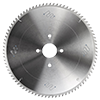 PCD Panel Sizing Saw
PCD Panel Sizing Saw PCD Scoring Saw Blade
PCD Scoring Saw Blade PCD Grooving Saw
PCD Grooving Saw PCD Aluminum Saw
PCD Aluminum Saw PCD Fiberboard Saw
PCD Fiberboard Saw Cold Saw for Metal
Cold Saw for Metal Cold Saw Blade for Ferrous Metal
Cold Saw Blade for Ferrous Metal Dry Cut Saw Blade for Ferrous Metal
Dry Cut Saw Blade for Ferrous Metal Cold Saw Machine
Cold Saw Machine Drill Bits
Drill Bits Dowel Drill Bits
Dowel Drill Bits Through Drill Bits
Through Drill Bits Hinge Drill Bits
Hinge Drill Bits TCT Step Drill Bits
TCT Step Drill Bits HSS Drill Bits/ Mortise Bits
HSS Drill Bits/ Mortise Bits Router Bits
Router Bits Straight Bits
Straight Bits Longer Straight Bits
Longer Straight Bits TCT Straight Bits
TCT Straight Bits M16 Straight Bits
M16 Straight Bits TCT X Straight Bits
TCT X Straight Bits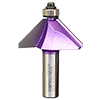 45 Degree Chamfer Bit
45 Degree Chamfer Bit Carving Bit
Carving Bit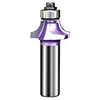 Corner Round Bit
Corner Round Bit PCD Router Bits
PCD Router Bits Edge Banding Tools
Edge Banding Tools TCT Fine Trimming Cutter
TCT Fine Trimming Cutter TCT Pre Milling Cutter
TCT Pre Milling Cutter Edge Bander Saw
Edge Bander Saw PCD Fine Trimming Cutter
PCD Fine Trimming Cutter PCD Pre Milling Cutter
PCD Pre Milling Cutter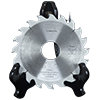 PCD Edge Bander Saw
PCD Edge Bander Saw Other Tools & Accessories
Other Tools & Accessories Drill Adapters
Drill Adapters Drill Chucks
Drill Chucks Diamond Sand Wheel
Diamond Sand Wheel Planer Knives
Planer Knives


